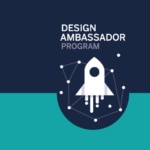BBVA trains 1,000 ‘Design Ambassadors’ in 10 countries
The ‘Design Ambassadors’ program, which has already reached its first milestone on a global level, was set up with the idea of creating hybrid employee profiles capable of applying the principles of design thinking in BBVA’s different business areas worldwide.

For BBVA, design is not the exclusive territory of designers. The bank now has 1,000 employees who have successfully completed the ‘Design Ambassadors’ programs aimed at developing hybrid profiles in the different areas of the bank’s businesses on a global level.
The program is one of the first tangible outcomes of BBVA’s mission to bring about a change in culture and in the bank’s internal processes through this discipline. But that’s only the start. “The goals of the Design Transformation Program are to empower all 132,000 BBVA employees to put the customer first, increase collaboration and approach problems with a creative mindset and toolset,” explains Mary Wharmby, the head of Design Transformation, and in charge of the program along with Campus BBVA.
In the long run, the aim is that the organization evolves from a situation in which design is perceived as something anecdotal (or exclusive to designers) to something which is completely integrated within the organization as a strategic element. In this way, design is taken on board as a “vision, a process and a toolset” that can be applied to any problem in any area of the bank, the BBVA official adds.
The role of ‘design thinker’ is after all useful in any project the bank takes on. It mean drawing on the vision of the user and working with this in mind, putting oneself in their position and empathizing with them to make their lives easier. Some of the basic tools of this discipline mean, for example, verifying that every product and service is easy to understand and use, focusing on the user and attending to his/her needs. The process “begins and ends” in direct contact with the user in order to first understand the issue and finally as to whether the suggested solution fits in with his/her needs. This applies equally to any professional in the sector whether it be the Sales, Talent & Culture, Legal o Finance department, Wharmby explains.
The experience has already allowed the introduction of improvements in the processes and ways of working
“We train professionals at BBVA to become agents of change in all the business and geographical areas of the Group, providing them with the necessary knowledge, techniques and tools in order that they can lead by example this process of transformation with a viral and decentralized focus”, explains Javier Pérez Hernando, head of Digital Learning at Campus BBVA.
New way of looking at problems
The project has already achieved its first goal which was to train in the first year 1,000 employees in 10 countries in which the Group operates such as United States, Mexico, Colombia, Peru, Spain, Argentina, Uruguay and Turkey. In these different areas, people have been trained who can act as ‘ambassadors’ and share in their respective departments and areas the knowledge acquired through practice, using what has been learned on a day-to-day basis.
The experience has already allowed the introduction of improvements in the processes and ways of working in many teams. Some have introduced new methodologies and have been able to design a more effective way of doing things for the simple fact of having spent more time analyzing the needs of the client, adds Wharmby.

The program teaches BBVA employees how to become agents of change.
For example, in the area of Investment Funds, one of the design ‘ambassadors’ who took part in the program has put in place a new way of looking at investment fund data that allows colleagues to compare the returns on the different products that is easier and more direct, allowing decisions to be taken more quickly. This change has allowed the professionals to “tangibilize knowledge” that was not easily accessible, using new techniques that were previously not available, explains Anxo López, Lead Design Strategist at BBVA and one of those in charge of facilitating the program.
There are also employees of the Business Processes Engineering department who, after going through the training program, have started to think of new ways of doing things. For example, one of the ‘ambassadors’ proposed including in-depth interviews as a means of gathering feedback on the needs of other employees and understanding the problems they faced in finding the best possible solution. The result was so positive that the department decided to include this methodology based on ‘design thinking’ as part of the normal process.

'Design thinking' is a non-linear process based on four main phases: empathise, define, ideate and prototype.
Analysis and creativity
In some cases, the training has served to show that certain processes are carried out in a certain way solely because they have “always been done like that.” In situations such as this, design invites one to think in a careful and creative manner about the problem in hand and only when it is clear what has to be resolved should the solution be tackled in a creative way. “We can see it’s working, because people for the first time are spending more time analyzing the problem than the solution”, adds López.
For Wharmby, one of the most important factors in gauging the success of the training program is that at one point in the future it will no longer be necessary. “As we move closer to realizing these goals, there will be no need for a dedicated Design Transformation Team. Working in this way will be an ingrained part of our culture and day-to-day activities. Transformation will be business as usual”, she adds.
In order to advance along these lines, the program will continue to embrace more employees and countries, backed up by other training initiatives. “We are currently supplementing and growing the training framework with new virtual and in-person content, shortly to be launched in order to consolidate this transformation in a focused manner tailored to the specific needs of each identified target”, adds Javier Pérez Hernando, head of de Digital Learning at Campus BBVA.